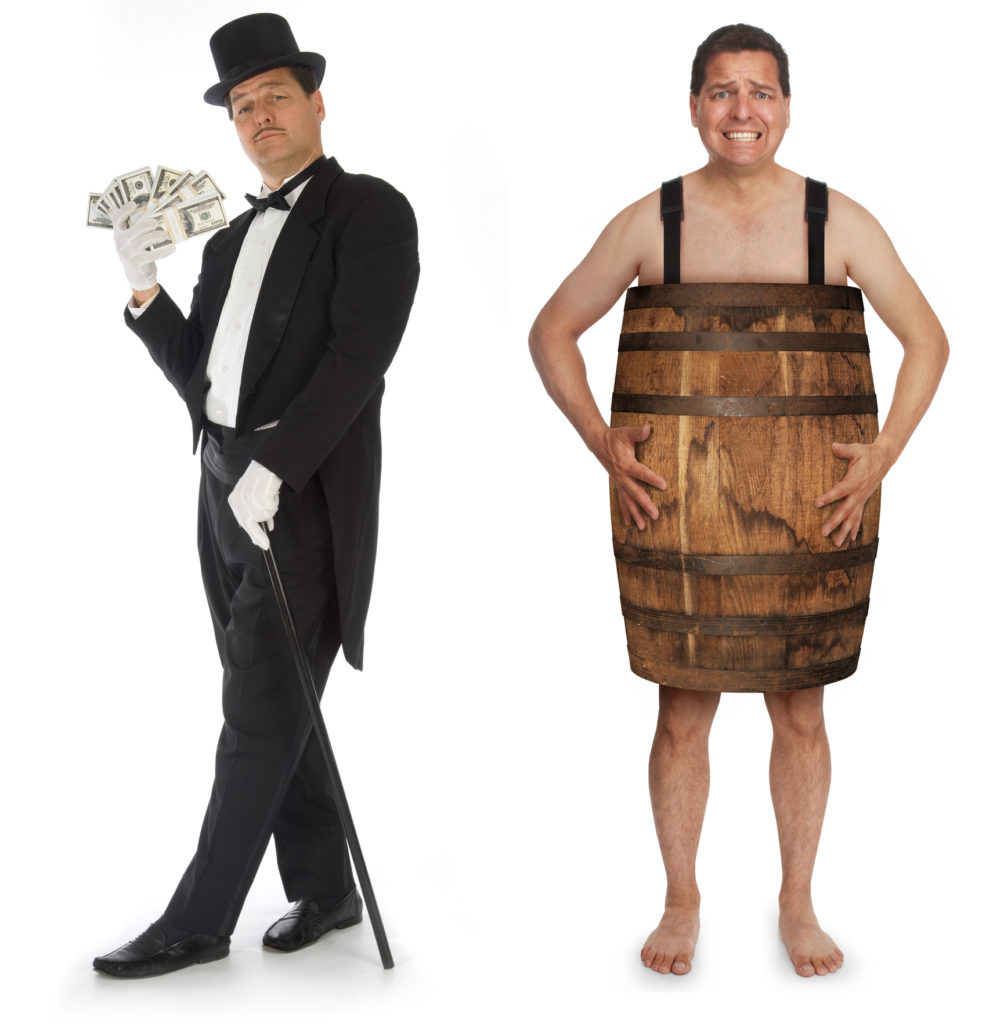Public Speaking Report 4: Your “Perfect 10” Look: Attire, Hair, Makeup (And More)
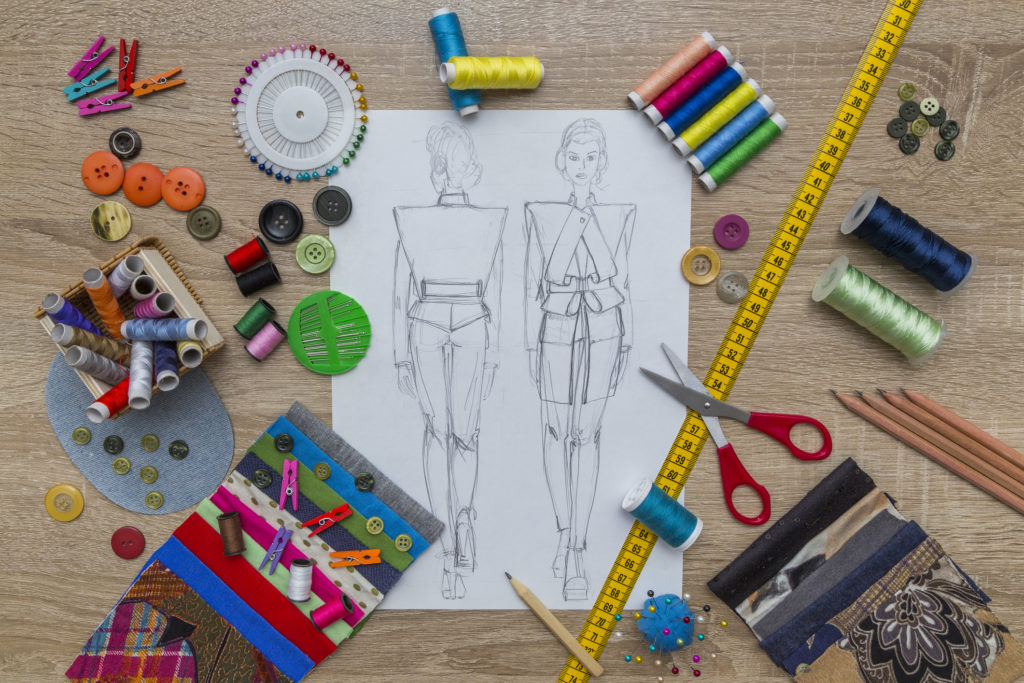
It’s been said that clothes make the person. Perhaps a more accurate statement would be they make an impression. When it comes to your audience, that impression can be made in mere moments. As a public speaker, a successful head-to-toe approach – from the hairstyle you choose to the shoes you use – plays a crucial role in getting your message out to your audience.
When you look good, you feel good – you are your version of a Perfect 10 – and that confidence is an important part of making a great first impression and connecting with your audience.
In this post, you will learn 10 tips that will help you to look great for your next presentation.
10 Tips on How to Look Great at Your Next Presentation
1. What do I wear?
The question of what to wear is not always an easy one, but you can make it easier by stocking your closet with the timeless classics that best suit your figure and coloring. It is even better if those pieces are adaptable and easily accessorized. It gives you the flexibility to adjust your look for different formats and audiences.
Before we delve into your threads, let’s consider the format, the venue, and the audience.
The dress code
As part of your presentation preparation, take the time to ask the organizers about dress code – for you and your audience. Some talk organizers might prefer casual clothes; others might expect a more formal approach.
“You probably don’t want the audience’s first unconscious thought about you to be any of the following: stodgy, slovenly, tasteless, boring, or trying too hard …. As you think about what you’ll wear, there are a few questions worth asking, such as, ‘Is there a dress code? How is the audience likely to be dressed?’ You’ll probably want to dress somewhat like they do, but a little bit smarter.”
– Kelly Stoetzel, TED’s head of conferences, TED Talks: The Official TED Guide to Public Speaking
This is no inconsequential decision. Clothing is a way we communicate with the audience and ourselves. Studies have found that what you wear can influence other’s perceptions as well as what you think about yourself. Further, if you are comfortable in what you are wearing and believe you are projecting the self-image you intend, you are more confident and appear more confident.
The format
The setup of your talk may affect your clothing choices:
- Will you be standing?
- Will you be walking around the room and interacting with the audience?
- Are you part of a panel or team presentation?
- Are you behind a table or in a more casual seating arrangement? High stools? Comfy chairs?
As we move on to the more specific tips, keep the speaking arrangements in mind. That fitted dress might not be as comfortable in a deep, comfy chair as is a pants suit. If you plan on a more interactive experience, perhaps fitted chinos and a sports blazer would work better than a formal business suit.
The venue
If you are giving a large keynote address and are standing on a stage in front of a curtain, it may help to know the color of the material or other color and design schemes of the room. You may not always be able to access this information, so selecting a neutral color – navy, gray, deep taupe, or black – is the best way to go. If, however, you know that curtain is burgundy, and you plan to walk the stage, you may want to forgo the burgundy dress and choose a contrasting (yet complementary) color instead – such as charcoal gray.

Informal vs. formal
Some industries are less formal than others, but as an expert in your field or topic, the outfit you choose should reflect a put-together, professional look that leaves you feeling poised and confident. It also should make sense to the audience.
Trish McQuillen, a wardrobe consultant and founder of Connecticut-based Style Design, Inc., says it’s best to start with the “uniform” that is well known in your field, which will avoid having you look out of touch.
“You know what people wear in your industry. Take what people wear, make sure it looks professional, clean it up, and make it look more polished.”
It’s OK to dress up a notch. You are likely to appear more professional and more authoritative on the subject. Just be wary of too formal a look, which could come across as unapproachable and create disconnect with the audience.
This leads us to a crucial component of any public speaking opportunity – you need to be authentically you.
2. Look the part and be you
Ultimately, you are going to want to feel good in whatever outfit you choose. That said, the concert T-shirt you’ve nearly worn threadbare certainly may make you happy, but it is not a good choice for a talk.
Here are some ways to better look the part:
- Consider the context. Choose the look that supports your message, reflects the tone of your subject, and reveals a bit about who you are. A more serious topic – the reasons behind a slowing economy – might be better delivered with a formal look, say a business suit, button-down and tie (for a man) or a fitted sheath dress (for a woman); a talk at a small book store during your book tour might be better served with pressed and fitted khaki pants, a sports coat and oxford – no tie (for a man), or fitted navy trousers, a crew-neck light blue silk blouse and a dove-gray cardigan (for a woman).
- Consider your brand. If you are an edgy fashion designer, it’s OK to take a few risks. If you are CEO, you may not have such freedom. That said, some of the world’s most recognizable business leaders are known for a look that might not pass muster for a presentation context if they were unknown. Think fast … who wears a gray t-shirt, jeans, and sneakers? Unless you are largely known by your audience for a distinctive fashion statement, stick to a more traditional look. It’s one less thing to distract your audience.
- One word about denim: Business casual has brought jeans into the professional setting. If wearing them is appropriate for your presentation, make sure they fit well, are of high quality, have a contemporary cut, and are teamed with an appropriate top. For instance, a jacket from a business suit could look incongruous, as opposed to a more relaxed, well-tailored, sports coat. T-shirts should be avoided, even for business casual, but if you opt for one under your jacket, it should be fitted, of high quality, and free of any (or at least hard-to-read) graphics.
 Leverage the logos. Logos or statement jewelry that are relevant to your message or represent a position you or your organization advocates could be a worthy addition to your overall look. If you are speaking about breast cancer research, for instance, the now easily identifiable pink lapel pin might serve to reinforce your message. Perhaps you are a police officer or a park ranger speaking about community safety and wearing your uniform or a shirt with a badge, which could reinforce your authority. Just be mindful of designer logos and jewelry that makes a political statement. There may be some in the audience that disagree with a political stance or company. If you are being recorded, your segment may be seen for years, and you don’t want to be sporting a symbol that has come to represent something or someone whose actions or ideals no longer have your support or your organization’s support.
Leverage the logos. Logos or statement jewelry that are relevant to your message or represent a position you or your organization advocates could be a worthy addition to your overall look. If you are speaking about breast cancer research, for instance, the now easily identifiable pink lapel pin might serve to reinforce your message. Perhaps you are a police officer or a park ranger speaking about community safety and wearing your uniform or a shirt with a badge, which could reinforce your authority. Just be mindful of designer logos and jewelry that makes a political statement. There may be some in the audience that disagree with a political stance or company. If you are being recorded, your segment may be seen for years, and you don’t want to be sporting a symbol that has come to represent something or someone whose actions or ideals no longer have your support or your organization’s support.- Age matters. Only you know what you can wear that looks good based on your shape, lifestyle, and comfort level. Say you know your audience will be skewing considerably younger. You do want to be fashion forward, but this is not the time to try on skinny jeans for the first time. If you were speaking to high school students, you wouldn’t dress like them – you’d dress like yourself. Classic looks never go out of style. If you want to appear on trend, pick the color of the moment (if it looks good on you!) and bring it out in an accessory. If the rest of you is contemporary and elegant you will always be in fashion. You don’t want to look as if you are trying too hard.
3. Cut a fine figure
The cut represents the style or shape of a garment – from a fit-and-flare dress to a slim-fit suit. You want to find the style that flatters your body and creates a clean and sharp silhouette.
Here are some basic guides:
 Not too tight, not too loose. You’ll want to move effortlessly, whether that is standing, sitting, or walking. Natural fabrics and blends work well. For women and men, a fitted suit (with a shirt or blouse) or a blazer and slacks, creates a pleasing silhouette. For women, straight sheath dresses fit most shapes and body types. Simply cut, they are a bit more fitted around the waist and hips. A tailored pants suit also can create a professional and flattering silhouette (see photo at right). Avoid a boxy look, which can make you look shapeless and wider than you are. Conversely, avoid an outfit that pinches. It not only makes you uncomfortable but brings unwanted attention to areas you’d rather minimize.
Not too tight, not too loose. You’ll want to move effortlessly, whether that is standing, sitting, or walking. Natural fabrics and blends work well. For women and men, a fitted suit (with a shirt or blouse) or a blazer and slacks, creates a pleasing silhouette. For women, straight sheath dresses fit most shapes and body types. Simply cut, they are a bit more fitted around the waist and hips. A tailored pants suit also can create a professional and flattering silhouette (see photo at right). Avoid a boxy look, which can make you look shapeless and wider than you are. Conversely, avoid an outfit that pinches. It not only makes you uncomfortable but brings unwanted attention to areas you’d rather minimize.
Personalized fit. Alterations can be an investment, but a proper fit helps to keep you looking proportional and put together. For instance, when wearing a blazer, it should fall at about the middle of the hipbone, according to McQuillen. Pay attention to where shirt sleeves fall, too. They shouldn’t hang over your hands. Lynne Glassman, who runs Doctor of Dress, a Washington, D.C.-based image consultancy firm, notes:
“Anything that doesn’t fit right, even if it is an Armani suit, is not going to look well. So, I always recommend getting something altered. I ask for people to shop for [the] largest part of them. In other words, if they have a small waist and large hips, they should buy what fits their hips and then get the waist altered.”
You also can look for brands that sell suit pieces as separates, if you happen to be two different sizes on top and bottom.
Maximize your potential. Get a sense of your body shape and silhouettes that flatter. There are ways to reduce areas of concern. Glassman calls it “illusion dressing,” which “highlights your strong points, while camouflaging where you need to …. Each and every silhouette can look evenly proportioned with flattering wardrobe choices,” she says.
Here are some tips:
- If you want to minimize your middle … avoid material that is bulky or shiny on the lower body. For women, Glassman says to accentuate your shoulder line with a horizontal style, such as a boat neck top, and find a style that skims over the abdomen and tapers to a hemline below the abdomen. Men and women should look for stretch material, refrain from a conspicuous belt around the middle, and employ a monochromatic look – don’t pick a jacket that is lighter than your pants and have the hem stop at your waist. That’s where the viewers’ eyes will go.
- If you want to look taller … avoid creating a horizontal line in the middle of your body, such as a top of one color and a bottom of another, Glassman says. Men and women can make their legs look longer, for instance, by picking hose or socks, as well as shoes, that are a similar color to their pants or hemline. Men who want to look taller should avoid baggy outfits or ill-fitted clothing, according to Antonio Centeno, who runs the online style guide Real Men, Real Style. Pants should be hemmed, sleeves shortened, and clothes taken in, because Centeno says the wider you look the shorter you look. You can find some specific suggestions here.
- If you want to “hide” certain areas of concern … look for clothing options that help minimize problem areas. For instance, long sleeves are considered more formal, but they also may be the best option if your arms are not as toned as you wish they could be.
Hemline hazards. Speaking of alterations, make sure your hemline is of appropriate length for all situations. Will your skirt ride up your legs uncomfortably if you are seated? Are you showing too much skin when you cross your legs in your trousers? It’s best to test your outfit while sitting and standing, well before you have to do so “live.”

4. Show your true colors
Most presenters likely would agree that a neon-hued suit is not the way to go. There is a spectrum of colors, however, so which way should you go? In general, you want to try and keep it subtle – nothing too bold, bright, or overly printed, McQuillen says. You are trying to avoid anything that distracts from your message.
- Keep it solid. Solid, bright, and jewel colors generally work well with any skin tone. If you are being recorded, however, it’s best to avoid white, which can appear too bright on camera, or black, which can get lost in the backdrop and prompt an odd, disembodied look for your head. Stay to the center of the color spectrum for everything from suits to ties. Blues, grays and jewel tones work well, notes author Lillian Brown in her book, Your Public Best: The Complete Guide to Making Public Appearances in the Meeting Room, on the Platform, and on TV. Blues, including navy, cobalt, and French blue typically look great, as do shades of purple, such as dark violet, as well as some reds – including burgundy.
- Look to the eyes. You can enhance your look by wearing your eye color close to your face, say Glassman and Brown.
- Timeless appeal. Navy suits are often the go-to, and rightly so, as navy is a color that looks good, is a timeless classic, and allows for personalization with accessories and the color you choose for the blouse or shirt, or tie or scarf – such as a crimson tie or a coral or magenta scarf. If you are going to work with a pattern for your tie, such as diagonal stripes, keep it simple, and avoid having it clash with the color of your shirt. Charcoal or slate, or even a lighter, gray (as in the photo above) looks good as a suit color, and is equally versatile.
5. Be wary of patterns
A complicated or overly wrought pattern might be too much for your audience to take. You’ll want to keep these points in mind if you reach for clothes with a recurring design:
 Avoid the moiré effect. This is more of an issue if you are being recorded, but some small, tight patterns, such as herringbone, thin stripes, and tiny polka dots may cause the viewer to see a wavy, vibrating pattern ripple across the clothes.
Avoid the moiré effect. This is more of an issue if you are being recorded, but some small, tight patterns, such as herringbone, thin stripes, and tiny polka dots may cause the viewer to see a wavy, vibrating pattern ripple across the clothes.- Keep it simple. Some paisley patterns, for instance, can become overwhelming with too many colors and swirls. However, a tie or scarf with a simple, monochromatic paisley print can add a nice pop to your outfit. Diagonal stripes on a solid colored tie can look good, too.
- Avoid fads. In general, consider the timeless appeal of your presentation, particularly if you are going to be videotaped or photographed. Plaid may be the new fad, but you don’t necessarily want to make that the pattern of your jacket. That said, if deep purple is the color of the season, reach for the dark violet tie or a necklace with a purple pendant. Just make sure the color compliments you and is in line with the rest of your look. You can remain fashion forward, yet rely on classic design to stand the test of time.
6. A well-heeled performance
Your shoes should not only be comfortable, but also look good. As you prepare for your presentation, try on your outfit with the shoes you intend to wear, Glassman says. You give yourself time to swap your shoes or adjust your hem – you don’t want your hem too high or your pants bunching at the ankle.
Here are a few other tips:
- Best feet forward. Make sure your shoes are free of scuff marks, dirt, or the price tag you forgot to scrape off the sole. Heels should not be ripped or worn-down. Shine them up before the presentation.
- Road tested. Don’t make your presentation your footwear’s debut. Make sure you’ve done a few test runs. You need to be focused on your message, not foot pain or discomfort.
- Keep them closed. Even with business casual, Glassman says women should wear closed-toe shoes. Open-toed sandals, flip-flops (which should go without saying) and other super casual shoes should be left in the shoe rack.
- Keep an eye on color. Choose shoes in neutral and solid tones, such as brown, black, gray, taupe, or burgundy. You don’t want the audience distracted by your banana yellow loafers, unless that is a widely recognizable part of your persona.
- Consider the height. For women, if you normally wear 3-inch heels and can walk with ease, then go with what makes you feel good and confident. Others may be more comfortable with less of a heel. Basically, what you choose should not detract from what you are trying to say and the way you want to say it.
- Consider the style. For women, pumps are considered a stylish and professional go-to style that can work for casual, as well as more formal events. Pumps typically feature heels ranging from two- to 3-inches high. Of course, if you are more comfortable in flatter shoes, black or brown loafers will work just fine, too. For men, oxfords are considered the most formal option. Loafers (penny, laced, tassel) tend to work better with business casual, and can be work with suit pants or chinos. Dress boots, whether laced or slip-on, can be teamed with a more formal outfit (just make sure your pants hang properly and do not bunch up around the ankle).
A word about socks: Wear colors similar in color to your pants and simple in design. That particularly comes in to play if you sit down or cross your legs. Also, make sure your socks rest high enough on your leg, so that you don’t unintentionally reveal some skin.
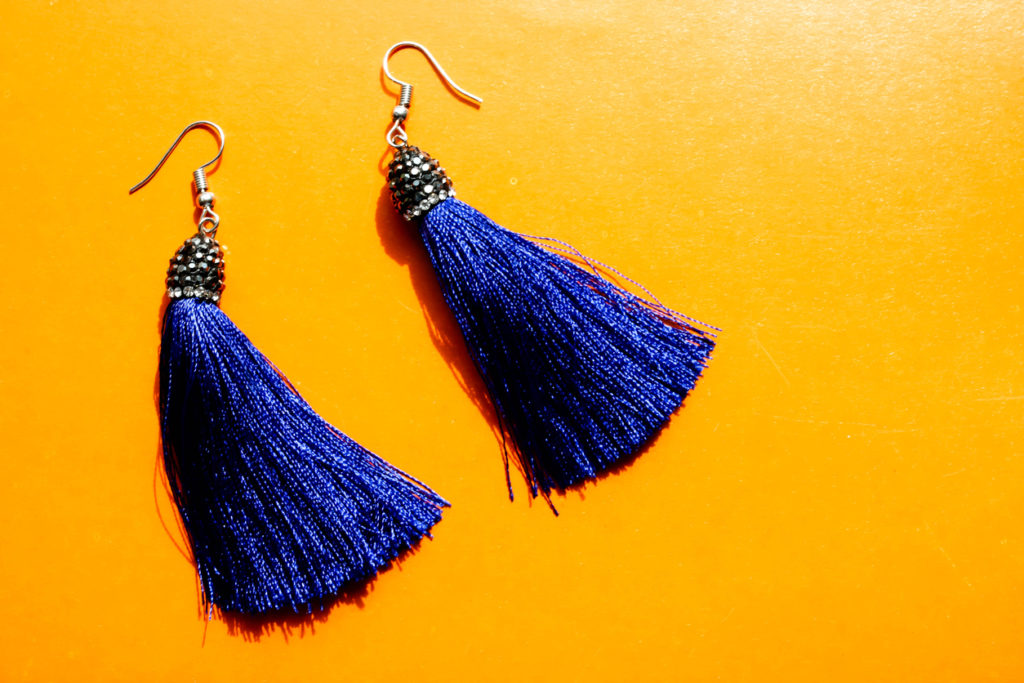
7. Focus on the details
As you accessorize, think about items that enhance rather than detract (or distract) from the message you are conveying – typically anything that can appear flashy or excessive. Still, your accessories help you to add pops of personality. Overall, you don’t want anything making noise beyond the sound of your voice, which is why it may be necessary to bypass some bling.
Here are some tips on better ways to adorn your look:
- Less is more. This goes for men and women. For men, that might be a ring, a watch, or a tie clip. Women will want to keep it simple: a watch or simple, elegant bracelet, along with a pair of studs and a small gemstone necklace. If you choose a “statement”-piece necklace, forgo earrings (or wear simple studs), McQuillen says. The idea is not to have anything that is meant as an accessory overpower you or any part of your presentation. (As an example, the late Aretha Franklin’s hat during President Obama’s 2009 inauguration nearly upstaged her performance of “My Country Tis of Thee.”)
- Avoid anything that dangles. A super long necklace could create audio problems with a clip-on mic, while dangling, swinging earrings could cause a visual distraction for the audience. The earrings in the photo above may be fashionable and dramatic, but they inevitably will be a big distraction to your audience.
- Avoid anything that jangles. Bangle bracelets that bang against one another could become an unwelcome distraction or curtail your ability to gesture – which research has found benefits a speaker’s presentation.
- Avoid anything that can cause a glare. This is particularly problematic if your talk is being recorded.
- Do look for versatile pieces. Select items that allow you to dress up or dress down a simple, professional outfit. This is particularly helpful if your audiences are diverse – from rank-and-file staff to high-profile CEOs. A silk scarf in a rich tone can dress up a navy-blue sheath, as will a string of pearls. You can appear more casual without the scarf and a simple necklace with a pendant. The addition or subtraction of a tie can turn your look from formal to casual in mere moments.
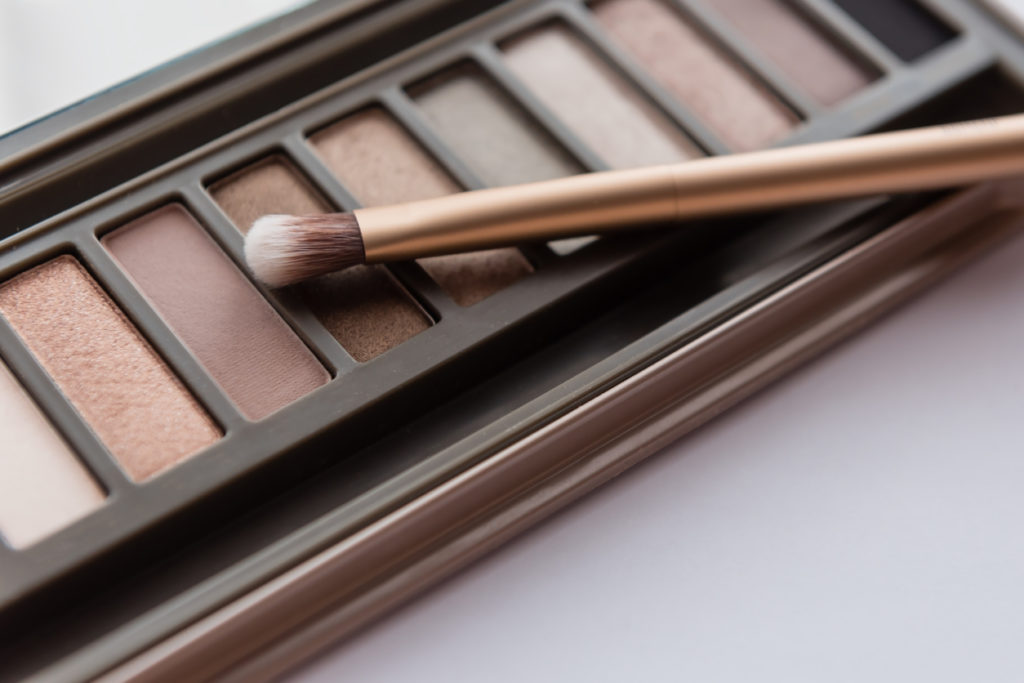
8. All made up
You’ll want to put your best face forward, so it’s best to establish a consistent hair and makeup routine for your presentations. We break it down for you, beginning with your locks.
Your hair
Your hair is the frame that brings attention to your face, so it should look neat and polished – which is the image you are trying to convey. If your hairdo covers your eyes or blocks your audience’s view of your face, it may affect your ability to effectively communicate your message. Aim for a modern, neat look, whether you are a man or woman.
As Brown notes:
“Avoid a style that is easily disturbed, difficult to manage, or comes apart with the slightest breeze.”

Suzanne Eden
Makeup artist Suzanne Eden, who owns a hair and makeup company, Clean Beauty Artists, which services the Washington, D.C. and New York City areas, says frizzy and flyaway hair can be distracting, but can be avoided with quality anti-frizz products. This is a trick she employs with a makeup brush:
“Using a powder brush (Eden likes the powder brush by Beautycounter), spray the brush with hairspray. After you do that, quickly brush over the flyaways on the top of your head. You can do this as many times as you need to. And let this be your flyaway brush. Definitely do not use this on your face.”
If you are bald or balding, depending on where you are speaking, the lights could cast a shine on your head. You can minimize the glare with some powder – just make sure it matches the color of your skin.
In general, you don’t want to mess with your hair, such as fidgeting with a bang that falls over your eyes or a section of hair that hides your face.

A few other considerations:
- Avoid getting a haircut right before your interview. Like a new suit, you’ll want to try it out for a few days before it makes its debut on television.
- Beards and mustaches should be well-trimmed, so as to not hide your mouth.
Your makeup
Anyone speaking before an audience can benefit from cosmetics. When applied correctly, makeup can bring greater attention to your eyes, for instance – which are important for making a connection with the audience. Some additional color helps to keep you from looking washed out, if you happen to be under the glare of bright lights. The idea is to take your everyday beauty routine and take it up a level to give you a healthy look.
This is primarily a primer for women, but men can benefit, too, particularly in terms of moisturizer and a healthy smile. Here’s a brush-up on how to make your makeup work for you:
- Start with the skin – Apply moisturizer well before you are set to speak. Give the lotion a chance to soak into the skin, before applying makeup; it will make application far easier. Also, you won’t end up looking shiny under the lights.
- Pick the proper foundation – Visit a high-end cosmetics counter for help in finding the right shade for concealer, powder, and foundation for your skin tone. It may require mixing and matching several shades to get the right look.
- Focus on the eyes – Make sure your brows are shaped and not unruly – and that both sides match. Use concealer, foundation, and powder to lighten the areas where shadows set in, such as under your eyes and where your nose and eyes meet.
- Give yourself some color – Be wary of shimmery bronzers or blush – you don’t want to look as if you have sprinkled glitter on your cheeks. A matte blush can give you a more natural look.
- Plump up the volume – Give some attention to those lips. Eden says healthy looking lips are very important when talking or smiling. If she spots dry lips, she will use a lip scrub to remove the damaged skin. She then applies moisturizer. You can scrub your lips the night before and apply moisturizing that night. She notes:
“For men, I like a more matte look and recommend moisturizing with the Lip Conditioner by Beautycounter at night. I then recommend using the Burt’s Bees Beeswax Lip Balm … for a less glossy look. For women, moisturizing your lips and then applying a flattering lipstick is key. For lipstick tones, I would stay away from really dark, light, or bright colors. Neutral tones with berry hues are typically flattering on most people.”
9. What not to do
These tips may seem like commonsense, but we’d be remiss if we didn’t offer a few reminders of the missteps that can trip up an otherwise stellar presentation.
- Show up wrinkled. Steam or press your outfit. Otherwise, consider wrinkle-free material or change into your outfit at the venue. One fashion fix is collar stays, which are small pieces of plastic or metals that are inserted into pockets on the underside of your collar to keep it from drooping, sagging, or sticking out. Too much sag, and you could look sloppy.
- Reveal too much. Avoid slit skirts, plunging necklines, and gaping arm openings (particularly on women), to avoid wardrobe malfunctions. Shirts should fit comfortably so that buttons do not strain and reveal an undershirt or skin. If you find yourself fidgeting or thinking you are revealing too much well before you start to speak, you probably are. (One caveat: Long sleeves are considered a more formal choice, but sleeveless sheath dresses are a popular wardrobe choice.)
- Pick “loud” choices. Avoid shiny or unusual materials and anything that makes a noise when you move – like a shoe that squeaks or a fabric that rustles.
10. Be prepared
The trick to a well-put together outfit is knowing what works and having it ready-to-go in your closet. The best outfit is the one you know flatters you and looks good. And you have the road tests to prove it.
As Glassman notes:
“You should not have to run out at the last minute for anything …. It’s usually money that is wasted.”

This speaker evidences several successful choices. She is wearing simple jewelry, including small hoop earrings, a thin necklace and an elegant bracelet. She is wearing a fitted dress in dark blue that allows her to gesture and move. Her hair is off her face, yet naturally styled. Her makeup is professional, yet not over the top.
Here are some additional tips:
- Find your look. Take the time to collect some go-to, fashionable, comfortable outfits long before your presentation or talk. Reduce the angst with choices that are easy to match, so you don’t have to take too hard of a hit on your wallet. This could be your shopping list:
- For women – a more conservative suit in navy, gray, or jewel tone, as well as a more casual pants suit with a collarless jacket; a well-fitted cardigan; a sheath or A-line dress in a solid color; several blouses (at least one with long sleeves) in colors that compliment your suits; a skirt that hits at or right below the knee. All of these should be able to be mixed and matched.
- For men – a more conservative suit, or two, in navy (or deep blue) or gray (charcoal to light gray), a sports coat in blue or gray; ties in solid, jewel tone colors, such as deep blue, burgundy, violet, red; a couple of well-fitted button-down shirts in light colors, such as white, light blue, and lilac.
- Consider the hardware. If you are going to be wearing a lavalier microphone, make sure your outfit has a place for the mic to be clipped and the battery pack to be hidden. An inside pocket in a jacket works fine, or it can be clipped to a belt or waistband.
- Bring some backup. An extra jacket, a cardigan, a pair of pants, pantyhose, socks … extra pieces of clothing could come in handy if you a.) decide to go more casual once you get on site or b.) if you happen to have a mishap, such as spilled coffee on your lapel or a broken zipper.
- Emergency kits. Create some small kits that contain the essentials for hair and makeup and wardrobe fixes. Safety pins or a small sewing kit could help with a button that pops off or a hem that rips.
- Take care of yourself. It’s easier said than done, but make sure to get a good night’s sleep, drink water, and assess whether you’d be better eating before or after your presentation – just don’t go in hungry.
- Brush it off. Right before you enter the room where you will speak, give one final dusting of your lapels and shoulders and take a quick look in a mirror. If the excitement has caused you to perspire, take a tissue, or blotting paper if you have it, and blot it away, taking care not to streak or smudge any makeup.
- It’s game time. When you arrive in the room where you will speak, you should be ready. Avoid using it as your dressing room. Your tie should be on and in place. The shoes you plan to wear should be on your feet – no switching out of boots and into your heels. If you think you’ll look better without the name tag, remove it before your audience arrives, and that goes for any badges or lanyards.
Ready for the spotlight
It does take work to get to your version of a Perfect 10. But, if you want to be taken seriously, that means taking a serious and methodical approach to your look.
The reward is a confidence that carries you through your presentation. With confidence comes connection with your audience. And, when you do the work on your physical appearance it ensures that what you are wearing does not distract from the message you want to tell.
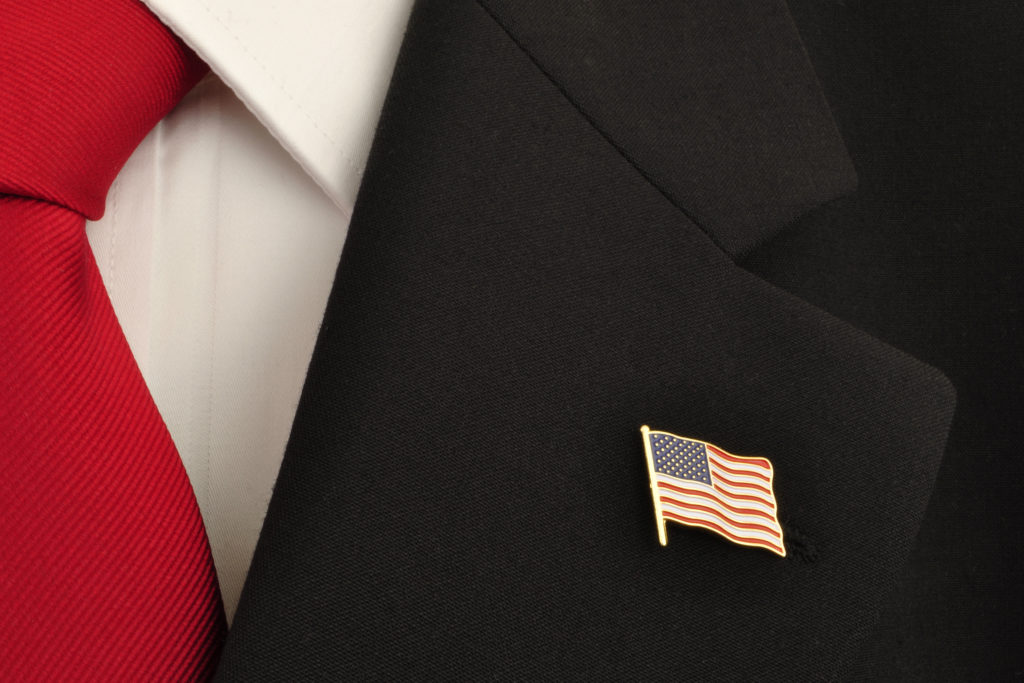 Leverage the logos. Logos or statement jewelry that are relevant to your message or represent a position you or your organization advocates could be a worthy addition to your overall look. If you are speaking about breast cancer research, for instance, the now easily identifiable pink lapel pin might serve to reinforce your message. Perhaps you are a police officer or a park ranger speaking about community safety and wearing your uniform or a shirt with a badge, which could reinforce your authority. Just be mindful of designer logos and jewelry that makes a political statement. There may be some in the audience that disagree with a political stance or company. If you are being recorded, your segment may be seen for years, and you don’t want to be sporting a symbol that has come to represent something or someone whose actions or ideals no longer have your support or your organization’s support.
Leverage the logos. Logos or statement jewelry that are relevant to your message or represent a position you or your organization advocates could be a worthy addition to your overall look. If you are speaking about breast cancer research, for instance, the now easily identifiable pink lapel pin might serve to reinforce your message. Perhaps you are a police officer or a park ranger speaking about community safety and wearing your uniform or a shirt with a badge, which could reinforce your authority. Just be mindful of designer logos and jewelry that makes a political statement. There may be some in the audience that disagree with a political stance or company. If you are being recorded, your segment may be seen for years, and you don’t want to be sporting a symbol that has come to represent something or someone whose actions or ideals no longer have your support or your organization’s support.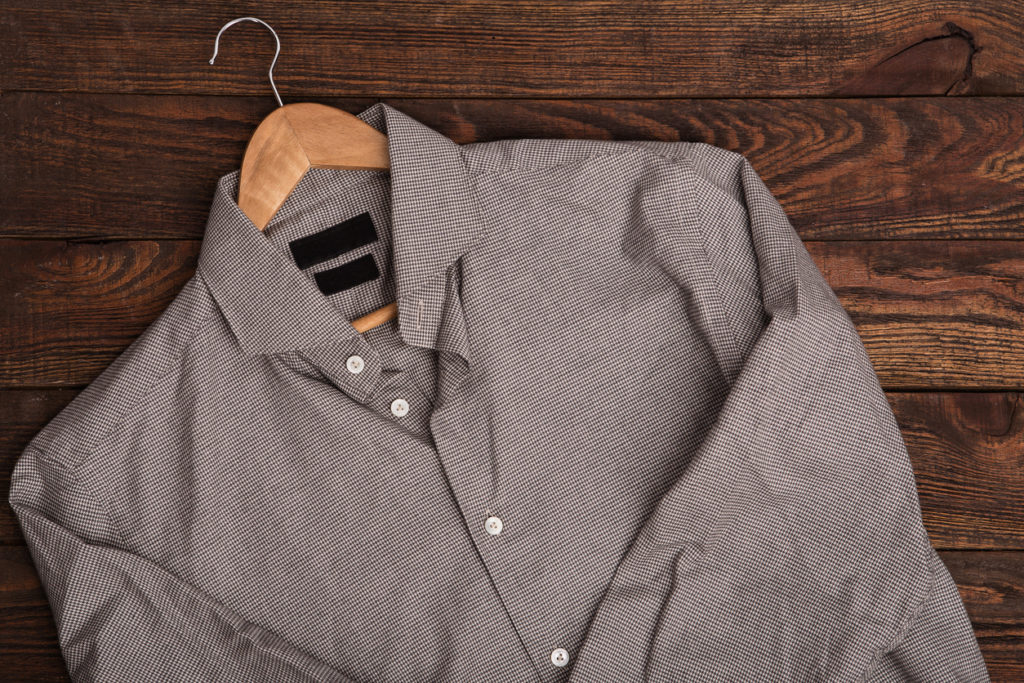 Avoid the moiré effect. This is more of an issue if you are being recorded, but some small, tight patterns, such as herringbone, thin stripes, and tiny polka dots may cause the viewer to see a wavy, vibrating pattern ripple across the clothes.
Avoid the moiré effect. This is more of an issue if you are being recorded, but some small, tight patterns, such as herringbone, thin stripes, and tiny polka dots may cause the viewer to see a wavy, vibrating pattern ripple across the clothes.

